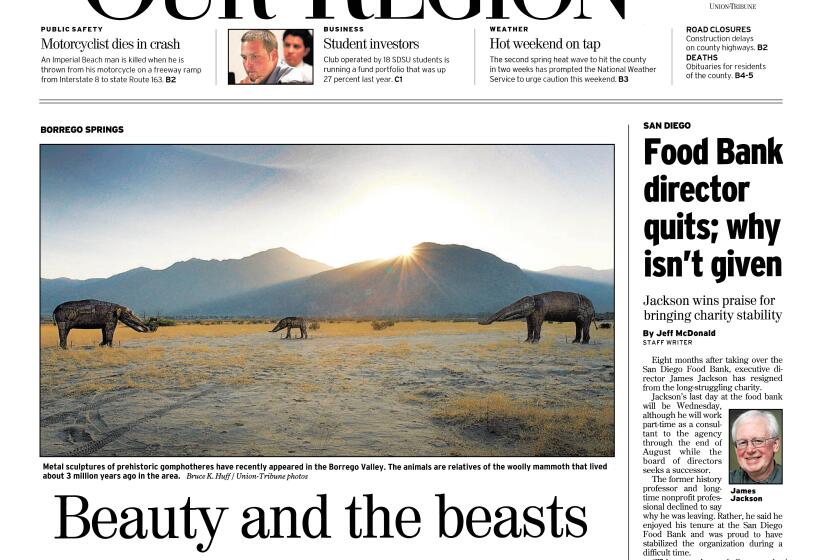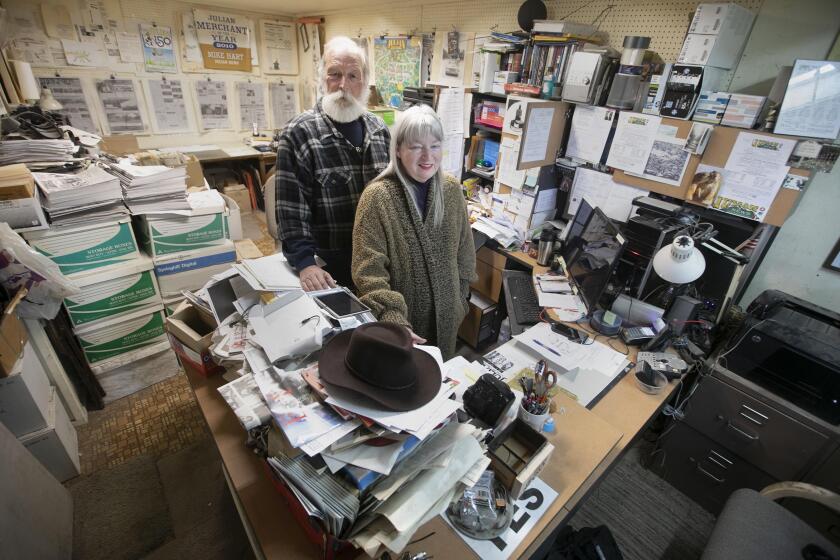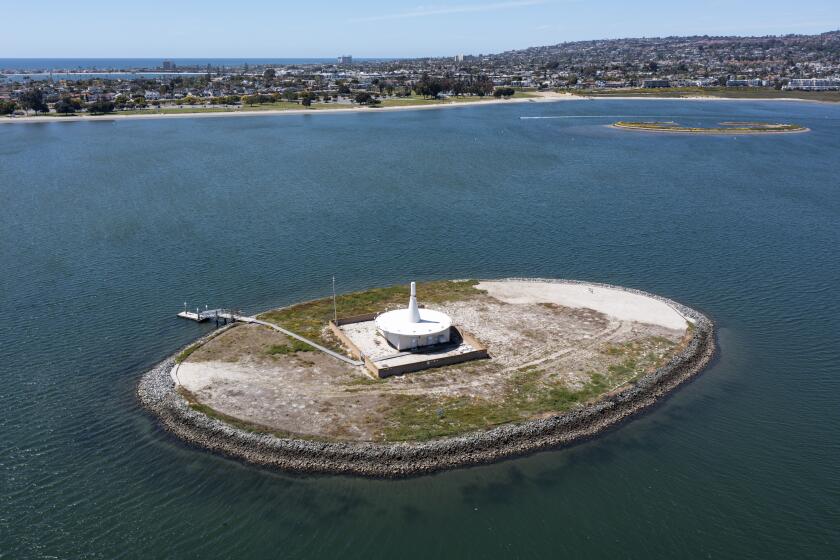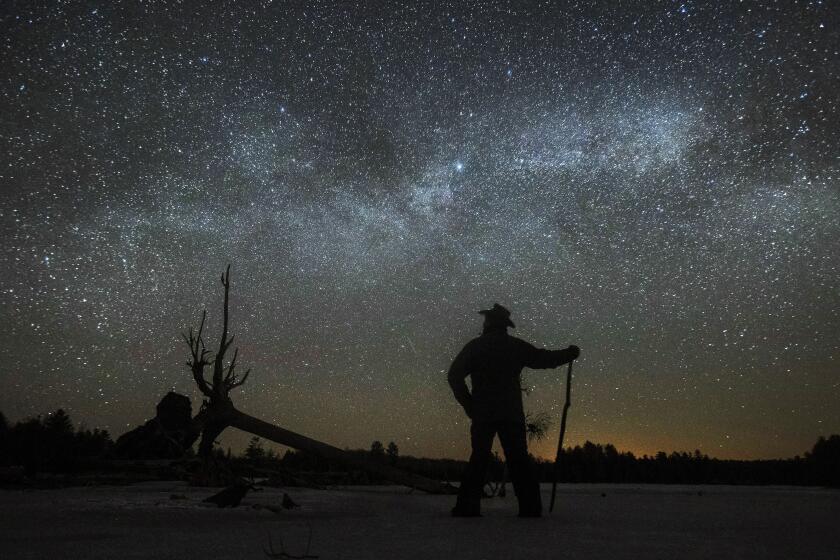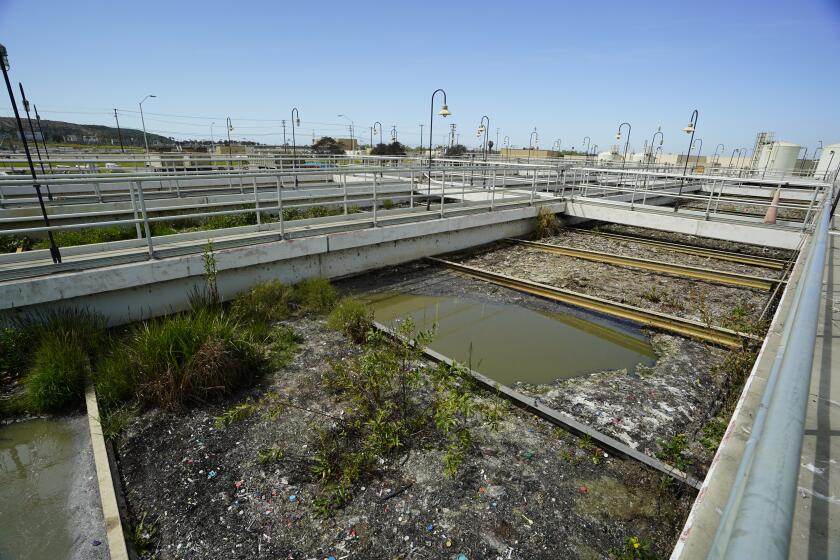Hundreds oppose Anza-Borrego park rule changes
Hundreds of people packed a public hearing in Kearny Mesa on Wednesday to demand that access remain open to popular visitor destinations within Anza-Borrego Desert State Park.
The hearing focused on a proposed rule change by the California Department of Parks and Recreation that appeared to prohibit off-trail access to cultural and natural preserves within the entire park system.
State officials say the changes won’t affect Anza-Borrego, however, because decisions on limiting access would be left to individual park districts — and the one that oversees Anza-Borrego doesn’t want the restrictions.
That didn’t stop roughly 250 people from flooding Wednesday’s meeting to argue against the proposed rules. The crowd was so big that some had to be turned away for fire safety reasons.
Those that spoke out included hikers, horseback riders, cyclists and rock climbers, as well as Borrego Springs merchants worried that the changes would turn off tourists. Environmentalists and an earthquake scientist also argued to keep the areas open.
The crowd opposed to the new regulations was so diverse that it prompted one Sierra Club representative to comment: “I’ll bet there are even Republicans in the room.”
About 42,000 acres within the 640,000-acre desert park are within eight cultural preserves —places where Native American artifacts can be found.
Rich Stuka, who has been visiting Anza-Borrego for four decades, said many generations of families have a strong connection to the park and its unique attractions, including Blair Valley, one of the cultural preserve areas.
“I named my daughter after Blair Valley,” he said. “So now she can’t take her kids to see the pictographs in Blair Valley? Really? Is that helping anything? Has anyone ever seen the pictographs damaged? I’ve been going out there a long time and I’ve never seen those pictographs defaced.”
Martin Jorgenson, of the local unit of the Backcountry Horsemen of California, said the rules are not needed.
“We cannot educate our children and grandchildren about the importance of our wild lands if we can’t access those lands,” he said. “Nor can we teach them the importance of protecting a natural or cultural resource if we cannot take them to it, show it to them, and explain to them its significance.”
Some speakers were quite pragmatic, wondering where hikers would go to the bathroom if they were limited to existing trails.
Park officials were prohibited from responding to the comments, but tried to clear things up before the meeting started. Alexandra Stehl, roads and trails manager for the California Parks Department, said confusion over the proposed regulations stemmed from vague wording — specifically the use of “department” that made it appear the changes would be statewide.
Instead, she said, “department” only meant that the decisions would be left to local districts. No changes are being contemplated in Anza-Borrego, she said.
The new regulations have been discussed for nearly five years and were prompted by a problem in Mount San Jacinto State Park near Idyllwild, where visitors were ignoring signs at a natural preserve and stomping through a meadow where a rare flower grows. She said other parks — excluding Anza-Borrego — were reporting similar problems so officials thought a state law might be appropriate.
Stehl said a final decision about the rule change will probably be made later this summer.
Many in the audience criticized the vague language in the rules and urged officials to spell out more clearly how it will be left to the individual parks to implement or disregard the changes.
Local park officials have said existing management plans for the preserves already give them the tools needed should a problem pop up.
Get Essential San Diego, weekday mornings
Get top headlines from the Union-Tribune in your inbox weekday mornings, including top news, local, sports, business, entertainment and opinion.
You may occasionally receive promotional content from the San Diego Union-Tribune.

